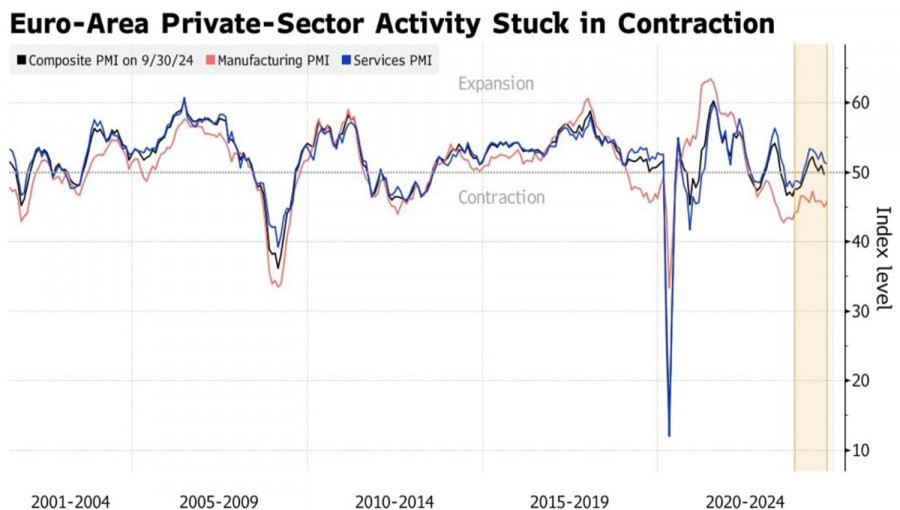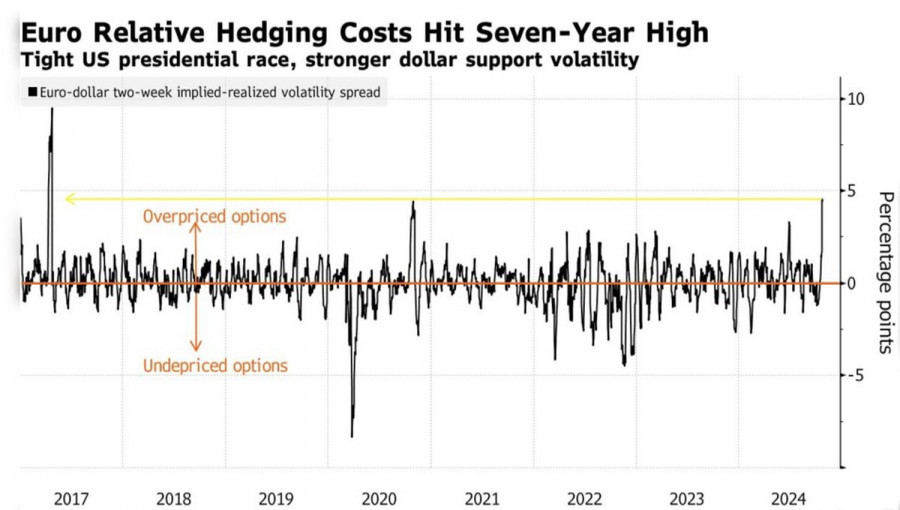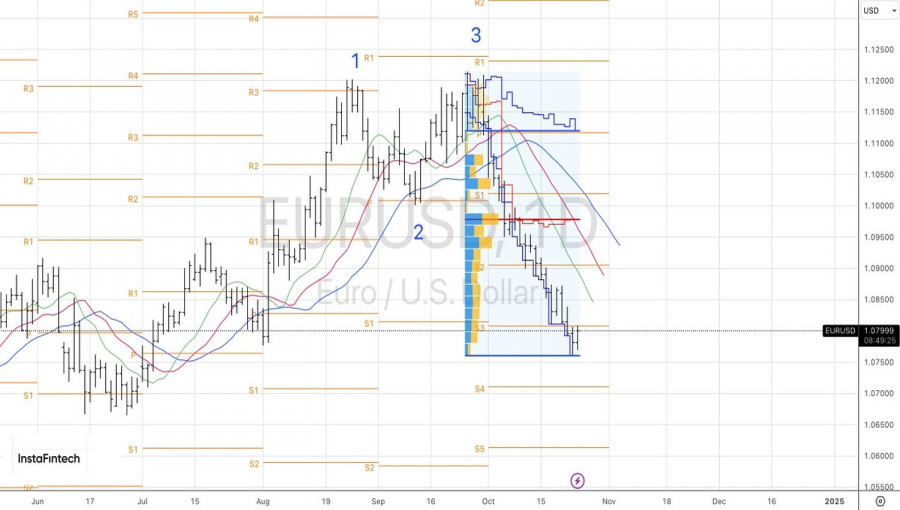It could worsen, and it almost certainly will for Europe if Donald Trump returns to power in the United States. Business activity in the Eurozone remained nearly unchanged in October, staying below the psychologically important level of 50, which indicates a contraction in GDP. Meanwhile, the threat of Republican protectionism looming over Europe drives EUR/USD quotes lower and lower.
Eurozone Business Activity Dynamics

In October, the US dollar had its best performance since 2022, which, according to Standard Chartered, is 60% attributed to Trump-related trading. The significant rise in Trump's poll ratings prompts traders to hedge against the risks associated with his potential actions. Donald Trump's intention to reshape the international trade system through large-scale import tariffs threatens severe market disruptions, pushing investors toward safe-havens. And they find that safety in a reliable currency like the US dollar.
For the euro, whose economy is already struggling, the return of a Republican to the White House would be a death sentence. The weakened Eurozone is unlikely to withstand a trade war, and a global economic slowdown would deal a heavy blow to pro-cyclical currencies like the euro and the pound. Unsurprisingly, the cost of hedging against a decline in the regional currency has reached its highest level since 2017, when the French elections unsettled Europe.
Dynamics of Euro Depreciation Hedging Costs

The negative results from business activity once again highlighted the Eurozone's vulnerabilities. Chief among these is Germany, whose economy suffers from the struggles of its industrial giants with high energy costs and weak Chinese demand. The second-largest economy in the currency bloc, France, isn't helping much either. Paris is attempting to achieve the impossible—balancing its budget, which it hasn't managed in the past 50 years. Even a slight failure by the government could result in a vote of no confidence and a new political crisis.
The Bundesbank believes Germany will enter stagnation in October-December after a recession in the second and third quarters. GDP will neither grow nor fall. One might have expected a strong recovery post-pandemic, but the armed conflict in Ukraine and the energy crisis have brought the Eurozone back to earth.

The European Central Bank (ECB) is in the spotlight, and its slow pace in easing monetary policy could lead to a prolonged recession. The export-oriented Eurozone desperately needs a weaker currency, a fact the ECB understands and is prepared to act upon—by aggressively cutting the deposit rate. If this scenario happens, the euro is in for a rough time.
Technically, on the daily EUR/USD chart, the bulls' inability to hold above the pivot level of 1.0805 is a sign of their weakness and a reason to sell, targeting the previously indicated levels of 1.0710 and 1.0600.
The material has been provided by InstaForex Company - www.instaforex.com #


No comments:
Post a Comment